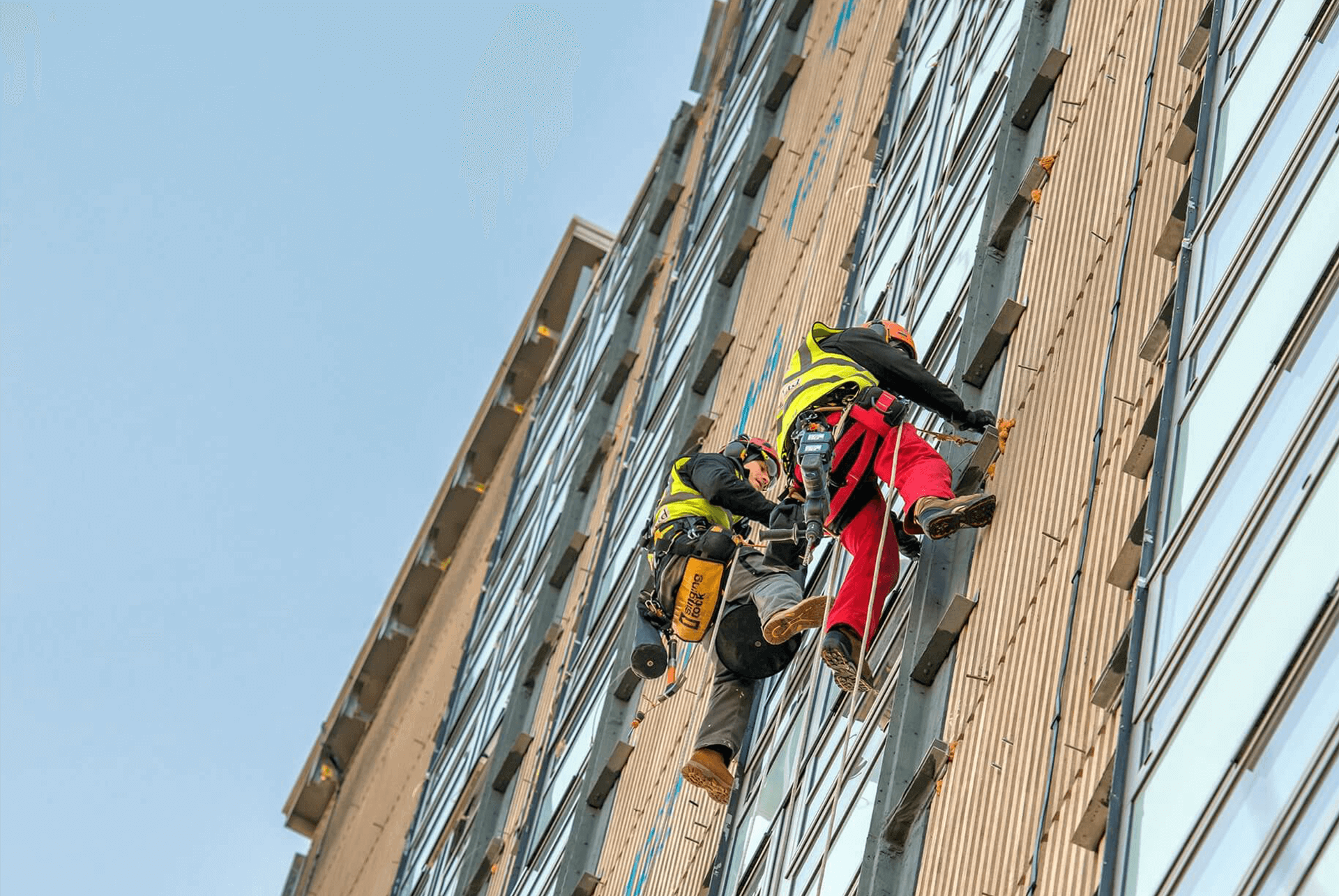
The ultimate rope access equipment list
High-quality, reliable, and safe equipment is at the heart of successful rope access. Whether it is repairs, maintenance, or construction, without proper equipment, you can’t use rope access to get the job done!
But what exactly are these pieces of equipment? How many of them are necessary and how many are secondary? This blog post will teach you everything you need to know.
#1 Rope
As the name suggests, rope access depends on ropes to function. So, without robust, high-quality, and lengthy ropes, rope access is simply not possible.
However, it is worth mentioning that the rope used in rope access is special. It needs to be able to support the weight of a person and their equipment, it needs to be quite long, and it needs to fit the mechanical devices used to ascend and descend. Most ropes don’t fulfill these requirements, which is why most rope access uses specially made ropes that are used exclusively for the task.
#2 2 Ascenders and Descenders
When you are working at height, you need precise control over your location, and this is exactly where ascenders and descenders come in handy. As their names suggest, they allow you to ascend and descend along the length of the rope to get the job done. They are essential, and you can’t do rope access without them.
#3 – Back-up Device
The back-up device is part of the core rope access equipment repertoire you need to bring with you on every mission. It attaches to the safety rope and is connected to the fall arrest attachment points of the harness. In case the primary ascenders and descenders fail or in case of sudden shifts in height, the back-up device acts to prevent a fall and acts as an important safety measure.
#4 Harnesses
To safely stick to the rope and have enough balance to get jobs done, you need harnesses. A full-body harness is usually made from leather or another durable material, wraps around your body at multiple attachment points, and intertwines with the rope. This prevents falls and allows you enough control to work on your tasks. Whether it is offshore rope access or construction jobs, you need fine control over your body when you work, and a sit harness can give you that!
Harnesses also give you room to carry more equipment, which might be essential during some rope access jobs.
#5 Helmets
Whether it is to protect your head from falling debris, provide additional safety during ascensions and descensions, or protect the head during accidents and falls, helmets are a necessary part of any rope access equipment repertoire.
#6 Additional Equipment
Outside these five essential pieces of equipment we listed above, there are several additional pieces of equipment that you’ll have to stock up on depending on what precisely the goal of the rope access is.
This includes drills, hammers, screwdrivers, and much more. As rope access is sensitive and requires great care, it is always a good idea to keep a list of all the items you’ll need beforehand and prepare them before you embark. However keep in mind that you can’t stock up on everything when you ascend/descend, as not only does the rope have a weight limit, it will impact your mobility as well. You have to find a practical balance regarding the number of pieces of equipment you take with you on one trip.




Recent Comments